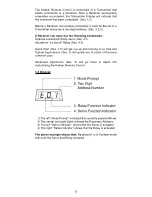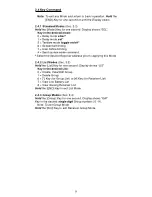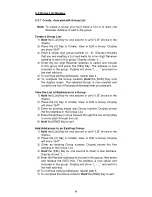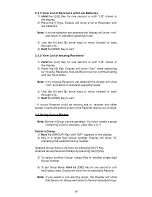
18
4.2 Operating the Relay
Your Kadee RC receiver is equipped with an on-board relay that
can be used to switch electronic devices on and off.
4.2.1 Relay Overview
Please read this brief overview. A basic understanding of the
on-board relay and it’s capabilities will benefit you in achieving
reliable operation without damaging the on-board relay.
This (solid state) relay is optically isolated from the Receiver
control circuitry to eliminate the possibility of permanent damage
to the Receiver if an overload should occur.
Care should still
be taken, not to overload the relay itself. Please observe the
following conditions for reliable switching and long service life:
Do not exceed 40 volts AC or DC at 250mA of load. It is highly
recommended that you place a 250mA fuse in your circuit to protect
the relay. Fuses and fuse Holders are available for purchase from
Kadee
®
if you cannot find them locally.
4.2.2 Connecting the Receiver Relay to a Circuit
The Receiver Wire Harness has a two conductor plug with orange
wires. There is also a receptacle connector with orange wires that
you can utilize in connecting the Receivers Relay to a circuit.
4.2.3 Actuating the Relay
Once the Wire Harness is properly connected, the on-board relay
can be actuated between an open and closed position by pressing
the [On/Off] Key.
Note: The Transmitter and Receiver must be Bound together and
the Receiver must be addressed by the Transmitter before
commands can be sent to the Receiver. (see Sec. 3.2.3)
It is highly recommended that you check the current (amps) being
drawn through your circuit. This can be achieved with a Volt Ohm
Meter (VOM).
Note: please read your VOM user manual for the correct
procedure of measuring current with your VOM.
Summary of Contents for RC
Page 1: ...Transmitter User Guide...





















